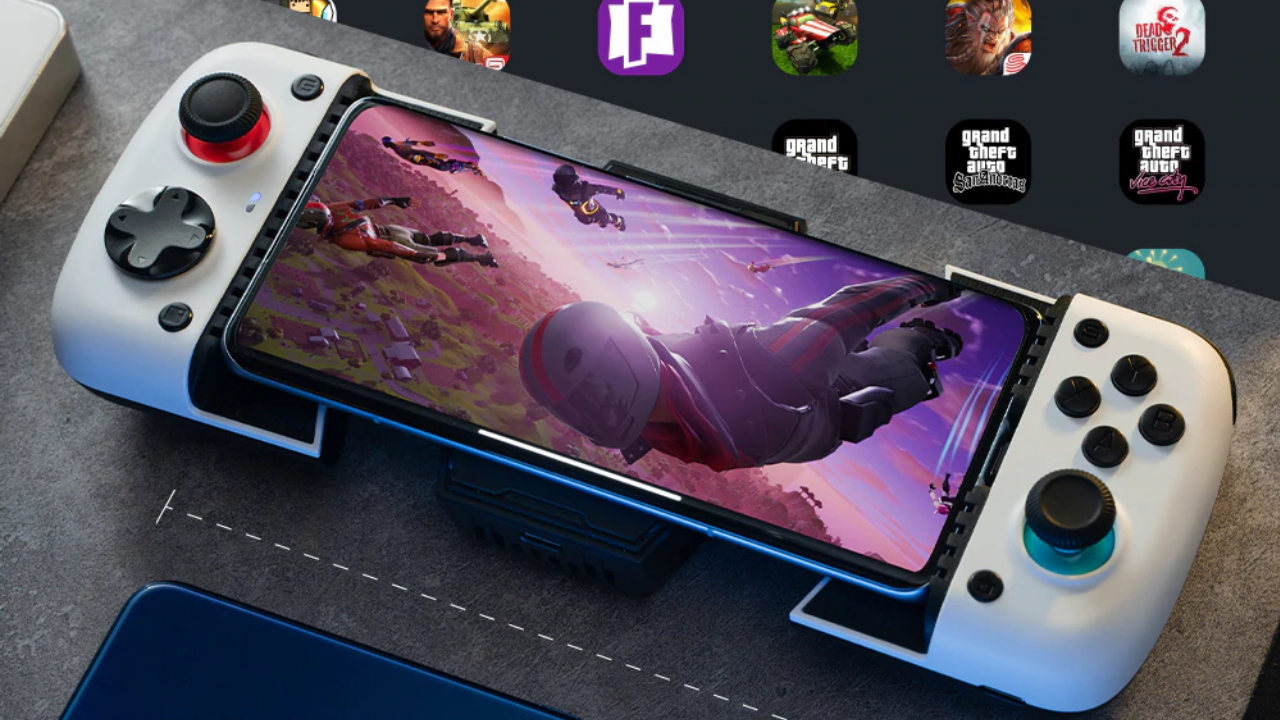Sponsored by GameSir and TapTap
After receiving my unit of GameSir X3 Type-C Peltier-Cooled Mobile Gaming Controller for Android, I wasted no time in pairing it with my Samsung S22 Ultra. The new X3 has kept to most of the structural design that worked in its predecessor, the X2, but the biggest addition that arrived with the X3 that intrigued me the most is the built-in, rear-mounted cooling fan that the company claimed will reduce up to 24 degrees (Celcius) of the phone’s surface temperature. I was sceptical at first but will reveal further down this review how the device slowly changed my mind about the claim is just a marketing gimmick, and how the X3 is more than just a pretty face.
Build and Design
The X3 weighs just 270g and the product has a dimension of 180mm x 88mm x 48mm or 7.09 inches x 3.46 inches x 1.89 inches. It only comes in one colour model which is a Black and White two-toned design with a Blue and Red neck on each of the analog buttons respectively.
To the rear is the bulky built-in case for the new cooling fan that thankfully did not make the X3 look ugly. If anything, I actually like how the X3 looks in design. Its plastic body feels sturdy, didn’t look cheap, and oh, the cooling fan has RGB when turned on which is the trademark of game fashions these days.
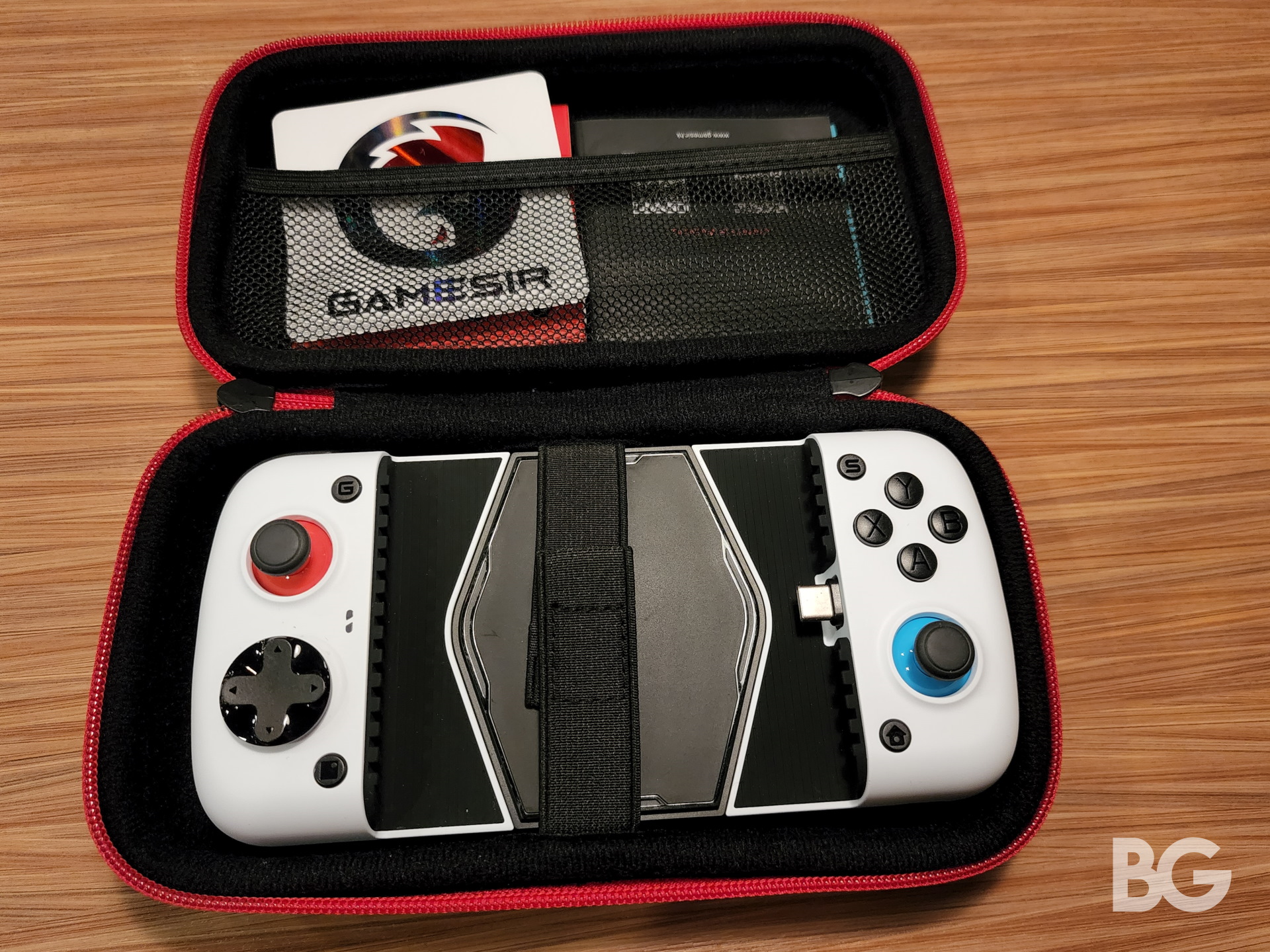
The controller itself features no battery of its own and relies on the phone’s battery to run. Thankfully, the X3 consumes just a mere 2mAh. There are 2 USB-Type C ports at the bottom – one for the cooling fan (yes, the cooling fan is powered separately which I will get into shortly) and the other for pass-through charging purposes in the event I wish to charge my phone through the controller.
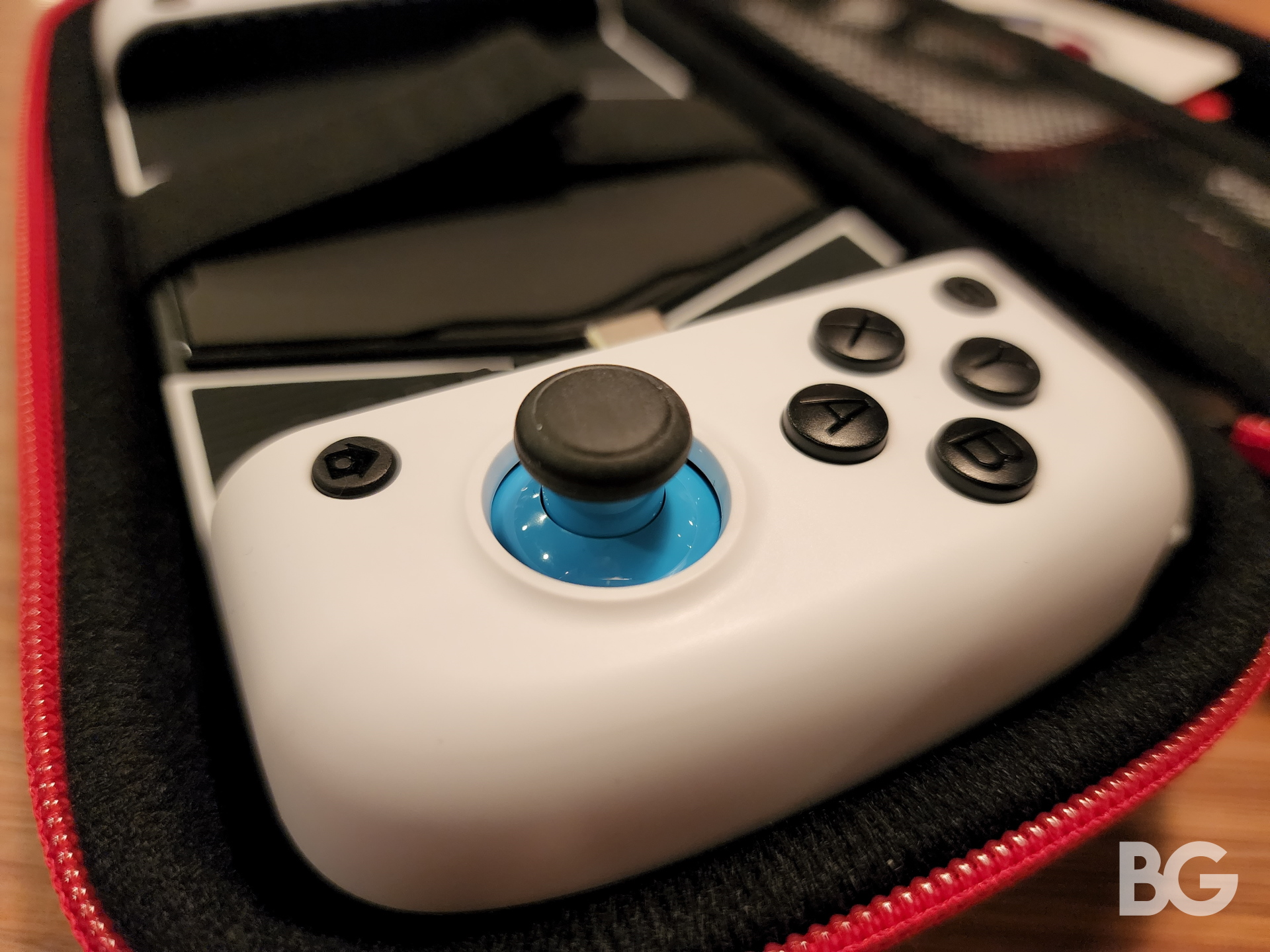
Attaching my phone to the X3 was simple enough. The two sides of the device are stretchable and can easily house Android devices between the lengths of 110-179mm. I can comfortably house my S22 Ultra phone, which is a rather huge device itself and can still stretch the X3 further to house a larger phone. The USB-C connector is smartly made into a flexible-rotatable joint that makes plugging/unplugging the phone safe and convenient without the fear of the Type-C head breaking and staying lodged inside the phone’s charging chamber.
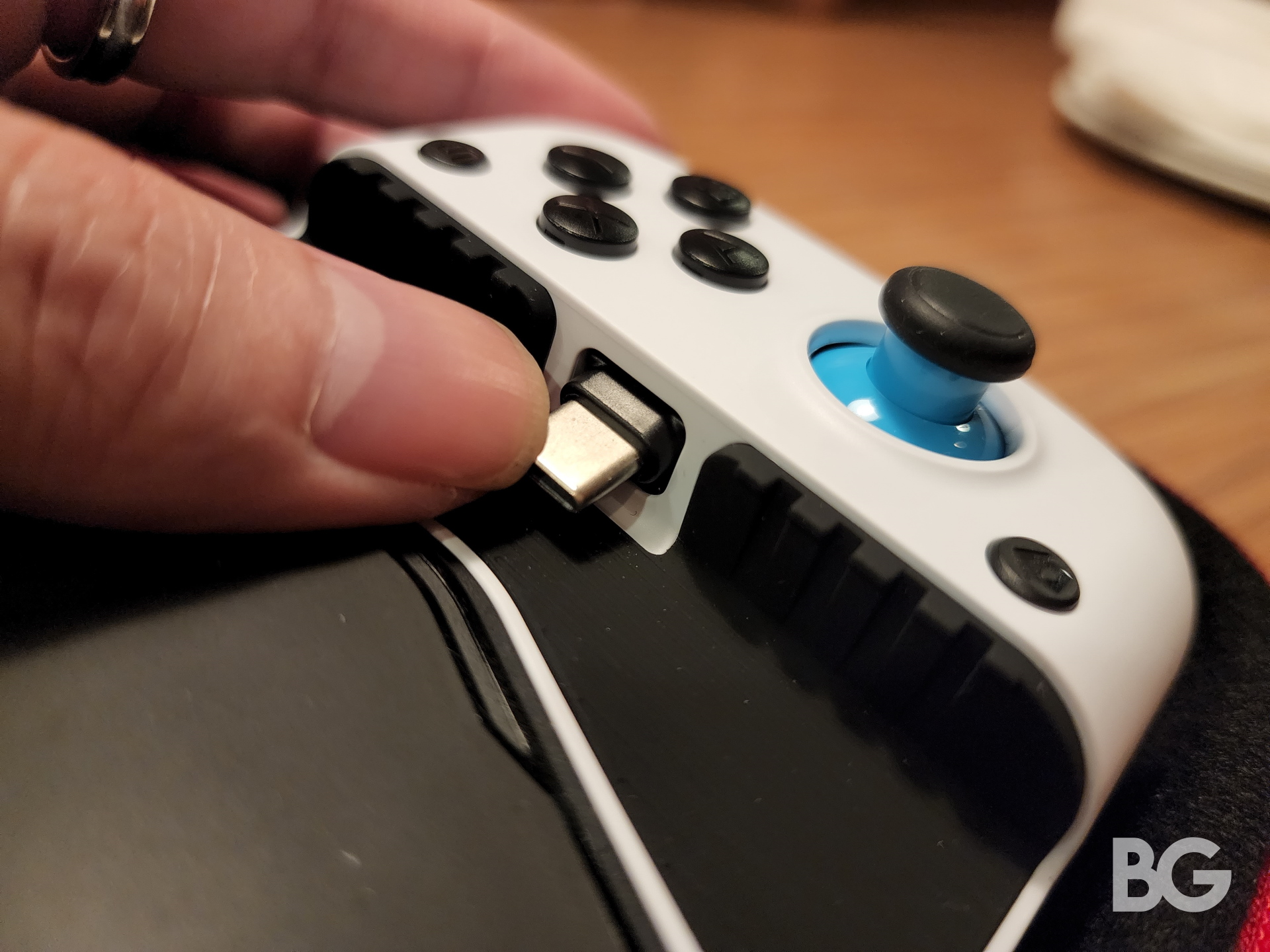
With the phone sitting in the X3, the entire build looks like a Nintendo Switch handheld console but the four action buttons layout on the right is modelled after an Xbox controller by default though it gets more interesting. The four ABXY buttons use a magnetic detachable design that allows them to be uncapped and re-arranged as per the user’s preference. So for example, if I am more accustomed to the Switch’s BAYX layout, I can simply re-arrange them to my pleasure. GameSir is also providing additional options for the X3’s button layout including additional D-Pad caps that I can switch with the factory default, as well as an extra set of thumbstick caps with a different texture. In terms of ergonomics, the design of the grip was decent and comfortable to hold for long hours
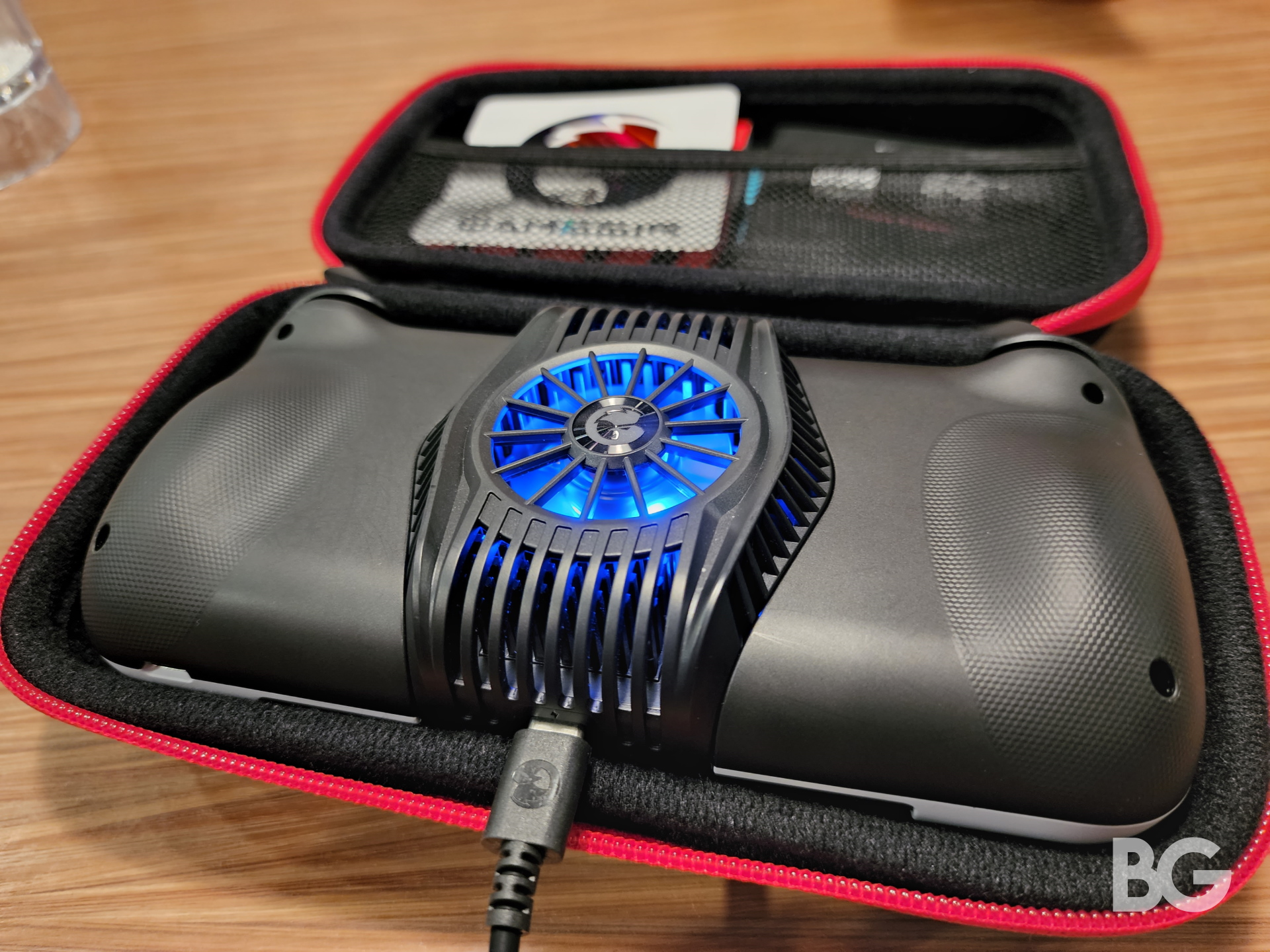
The four R and L trigger buttons use Kailh switches and is claimed by GameSir to have a lifespan of 3 million clicks. And though I’ve only started using the X3 for several days now and is nowhere near qualified to comment on the 3 million clicks lifespan, my experience with it so far has been convincing. The buttons remained solid even when I apply more pressure on it than usual. But perhaps the cream of the crop for me about the X3’s button is the fact that the controller comes with a dedicated button that automatically takes a screenshot every time it’s pressed. The screenshot button reminds me of the PlayStation controller and is an absolute convenience whenever I need to take a still without going through the traditional routines required by the phone.
Gaming On It
The X3 being a wired controller means it does not face the issue plaguing Bluetooth controller users, which is the input lag. Gaming with my phone wearing the X3 feels as though I’m playing a much-improved Switch at times. But only at times. Despite the X3’s exceptional build quality and skeleton design, it remains a third-party companion gadget aimed and designed to improve our mobile gaming experience. But how well it can work to that effect still depends a lot on the games we play and whether those games come with controller supports. Android games with controller support work great and immediately with the X3, whereas games that don’t would take me some time to remap the buttons with the help of GameSir’s companion app to make the X3 game-ready.
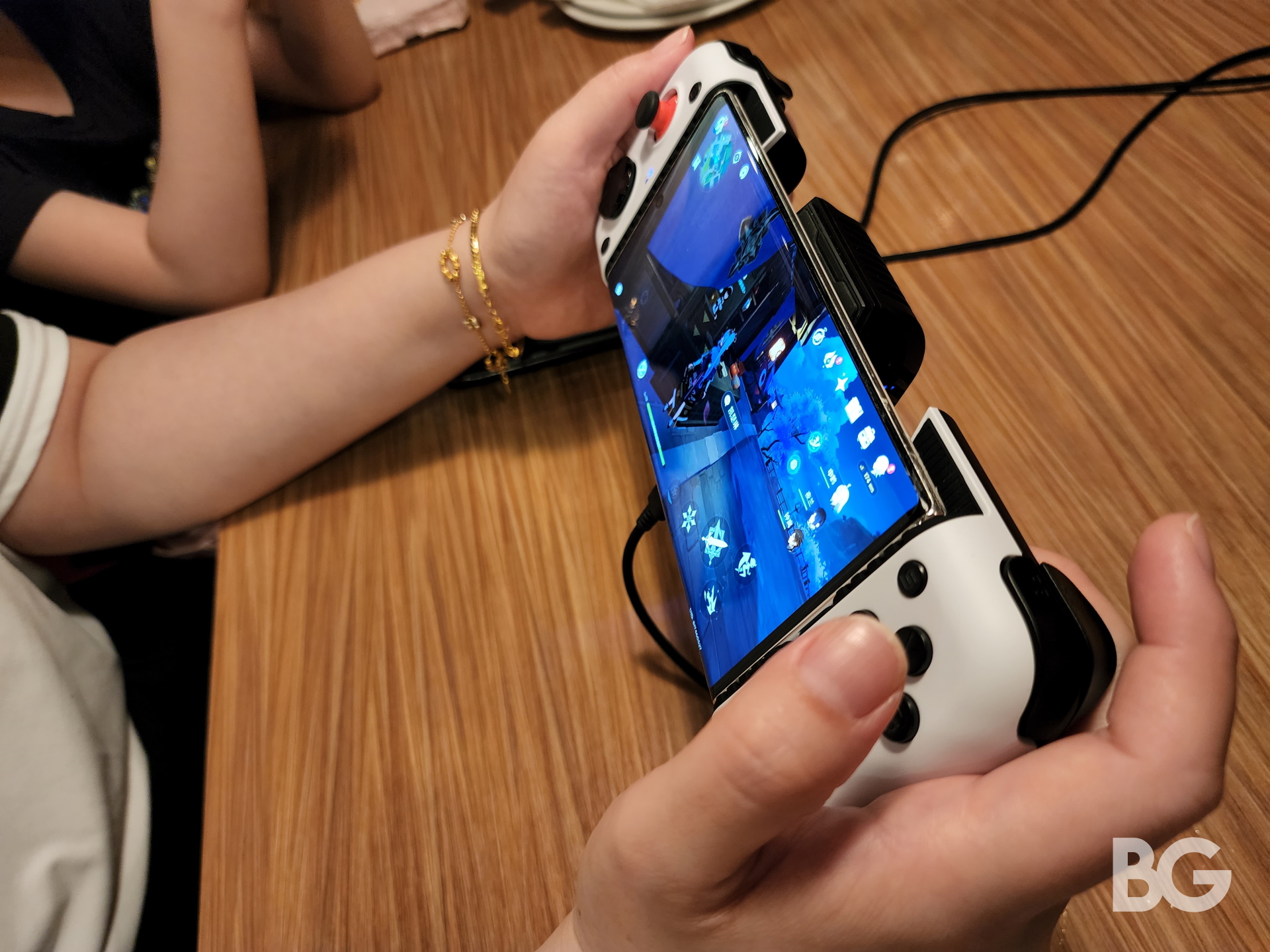
It took me a good 5 minutes or so to remap the buttons for it to suit the layout I’m accustomed to for Genshin Impact, a game I mostly play on my PlayStation 5. Naturally, I tried to see if I can get a 1-to-1 result with the PS5 layout on the X3 but it soon proved impossible. There are interactions that’d still require me to tap on the phone’s screen manually but they are not as much of a turn-off as me playing the game on the phone directly.
Racing games work exceptionally well on the X3, especially Asphalt Xtreme where the precise control and tactile sensation from the buttons made the game much more enjoyable that I ended up grinding for 2 hours straight. Fortnite, a game that I never imagined myself playing on a phone is suddenly enjoyable because I am no longer worried about trapping my own fingers when my right thumb is stuck controlling the camera angle instead of responding to the action buttons.
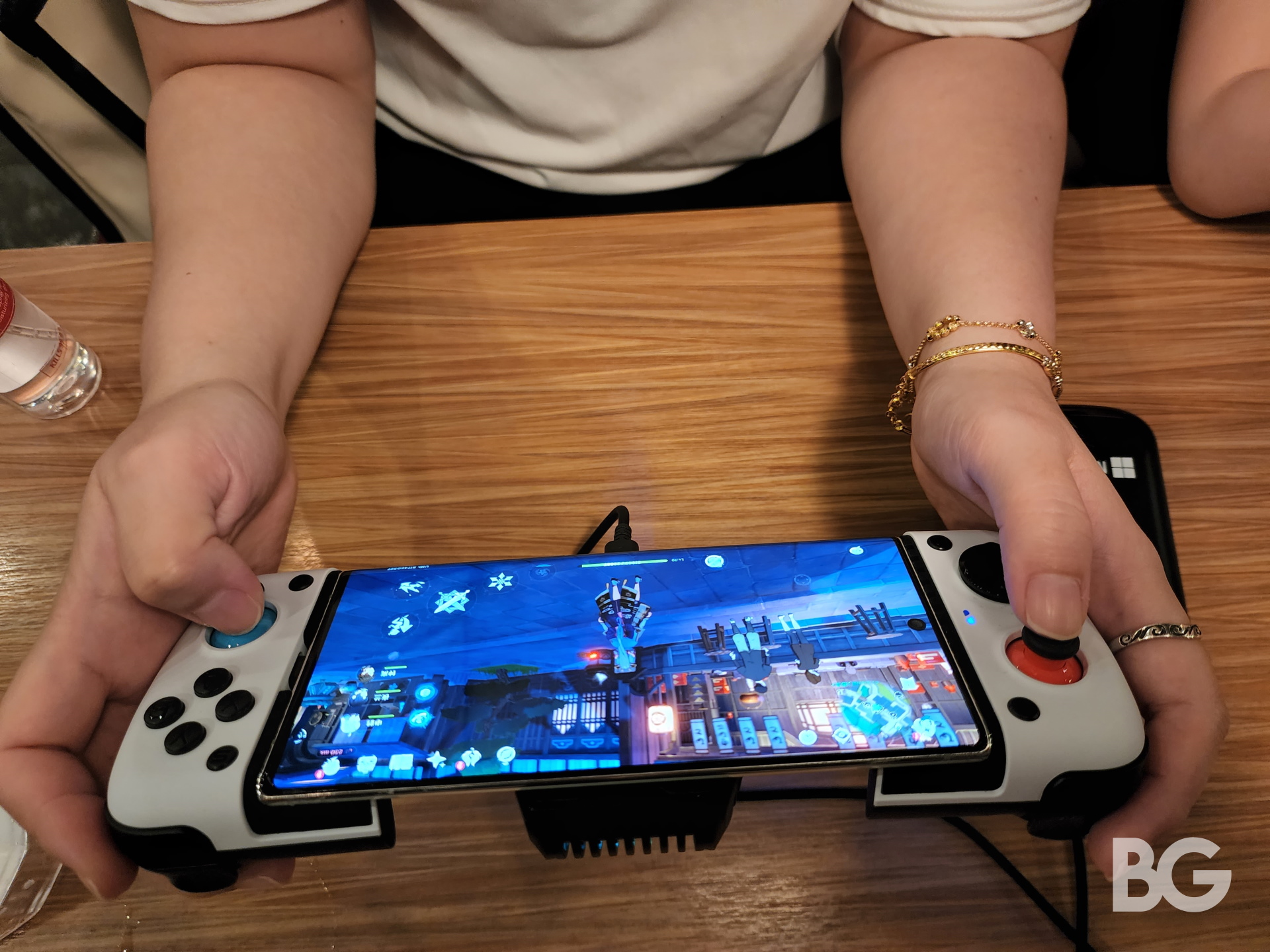
I’ve also tried the remote play function on the PS5 which the developer claimed the controller supports and the result was admirable. The X3 was a good substitute for the DualSense controller for remote play and though it didn’t immediately work, I only had to remap the buttons to mirror those of the DualSense layout and it was a simple and quick job.
It wasn’t long before I was having fun in the comfort of my bed, playing one of this month’s PlayStation Plus free games – Naruto to Boruto Shinobi Striker. This fast-paced 3D-fighting game was the perfect testing field because it involves good camera control, good response time, multiple-input for actions and blocks, and provides a good opportunity to test the X3 on mainstream games.
The result surprised me. I could comfortably do what I’d usually do on the PS5 directly on the X3 and the X3 works splendidly most of the time with the occasional delays due to the internet connection tainting the experience that is otherwise great.
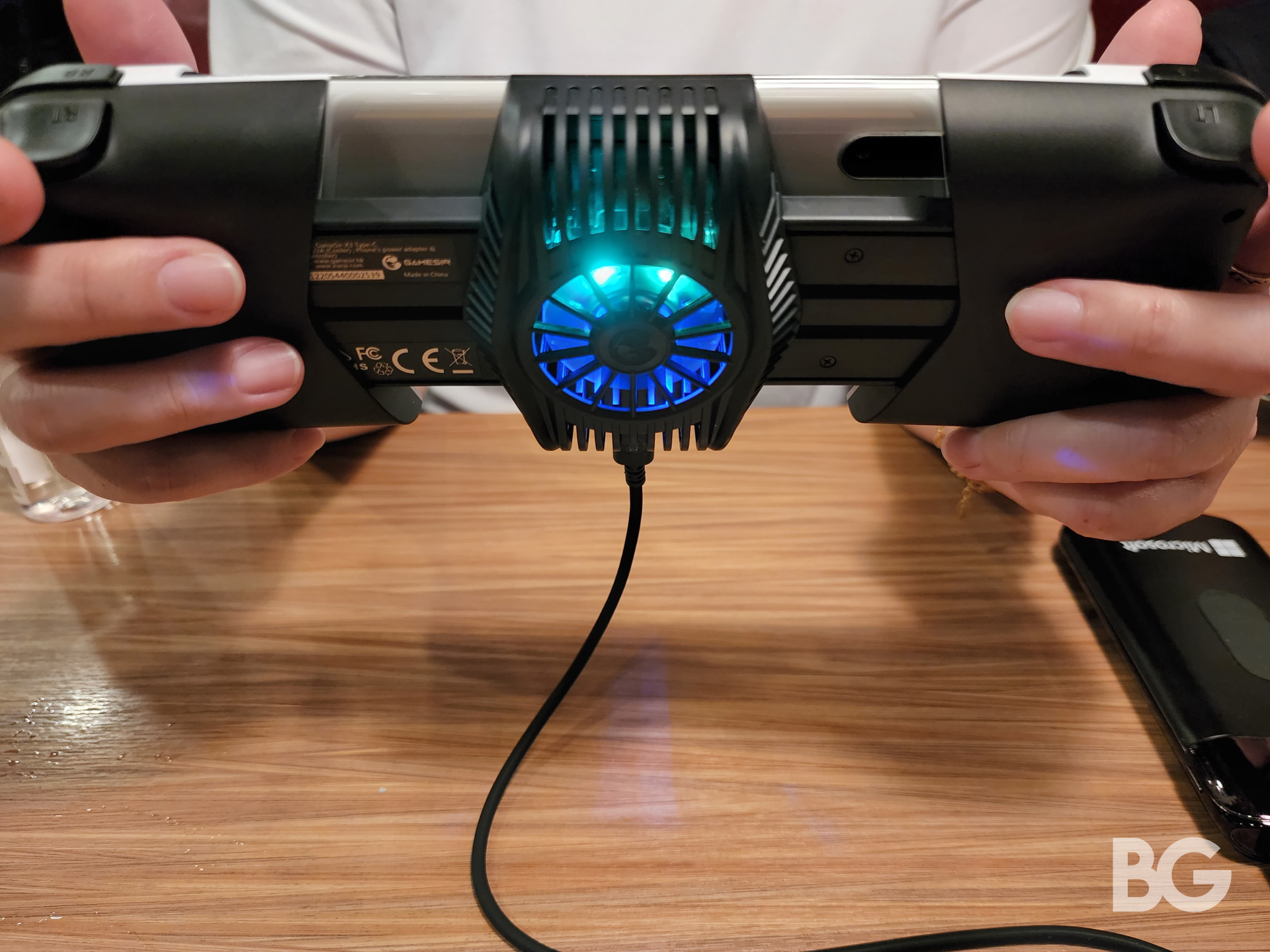
New and Cool, Cooling System
The new built-in cooling system is the main highlight of the product but I thought it was just a creative gimmick until I realised it was not. Powered separately from the phone’s power source, the cooling fan introduced a reliable way to dissipate heat from the surface of the phone. This of course meant I had to strip my phone off its cover for the cooling system to fully take effect in the 4000 millimetre square of the cooling area that it covers but I didn’t mind.
How it works is, that the phone is held in place by the two firm grips at the side and sits on a cooling silicone pad which in turn sits on a cold copper plate. The cold copper plate is rested on a Peltier Cooling Module in a heatsink that is backed by a 7-bladed fan blasting out at 7500 RPM. This setup is supposed to bring the surface temperature down by 24 degrees Celcius but since I do not have the tools to measure it, I can only rely on the old “touch and feel” method. The surface area nearest to the silicone pad was cooler than the area further but it did bring the temperatures down and the phone was no longer unbearable after long hours.
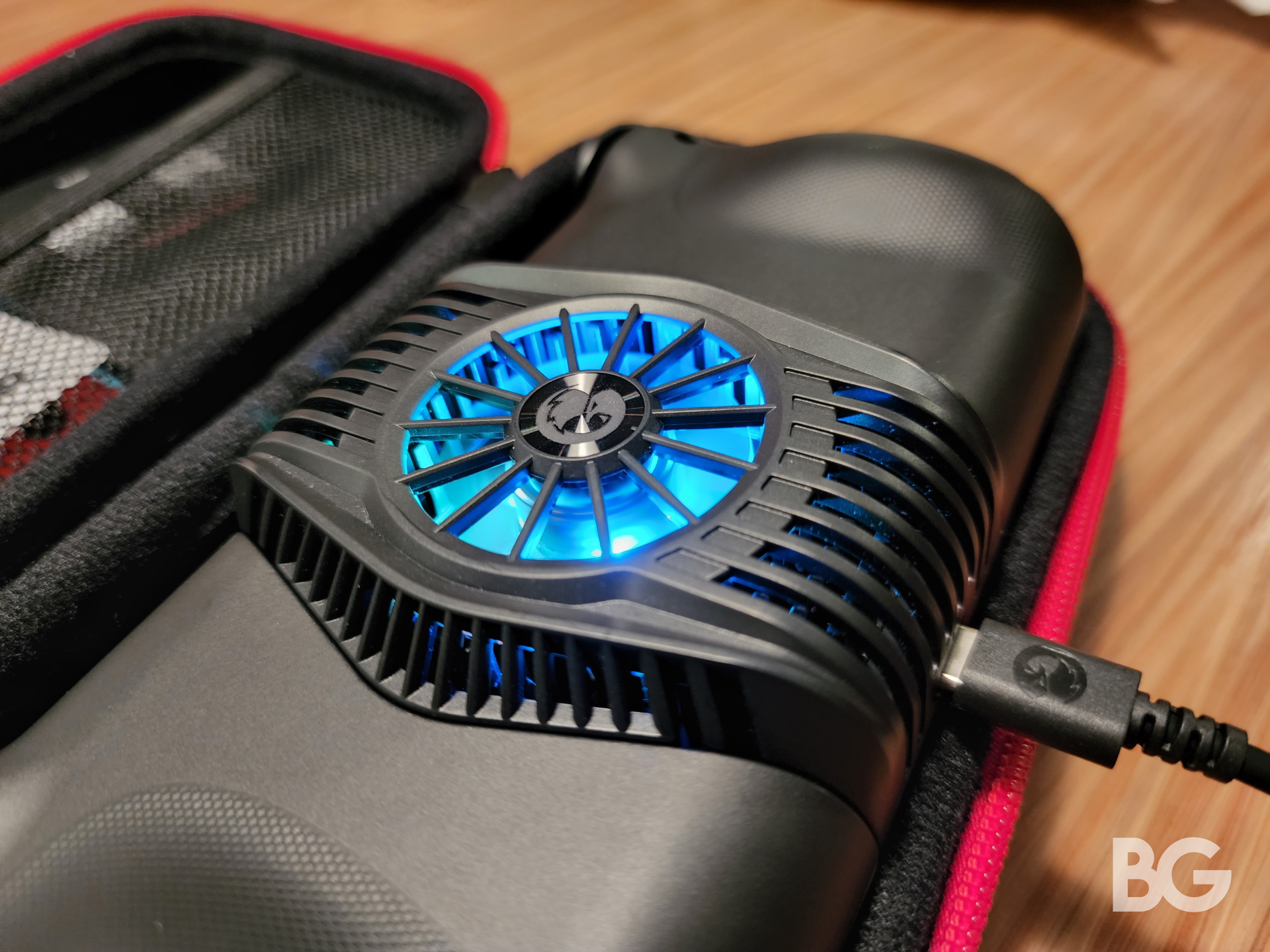
Usually, I had to put my phone down to rest it after every hour of gaming (it can go much longer but just in case) due to the heating up issue. But on the X3, the longest I went straight without resting was 3 hours straight and the phone’s temperature didn’t concern me still. It was warm, but it was not worryingly warm.
The only complaint I have about the cooling system is the fact that it has to be powered separately by an external power source. I understand the logic that the X3 was designed to not burden our phones with high power consumption and therefore the external power source for the cooling fan. The other appeal of this design is the player can choose whether to use the fan depending on their phone condition and environment. But I still wish I didn’t have to carry a power bank or sit near a power outlet to enjoy the cooling benefits. The cooling system is great but it would have been even more appealing if it had come with its own rechargeable battery or provided the player with the option to power it from the phone’s power source.
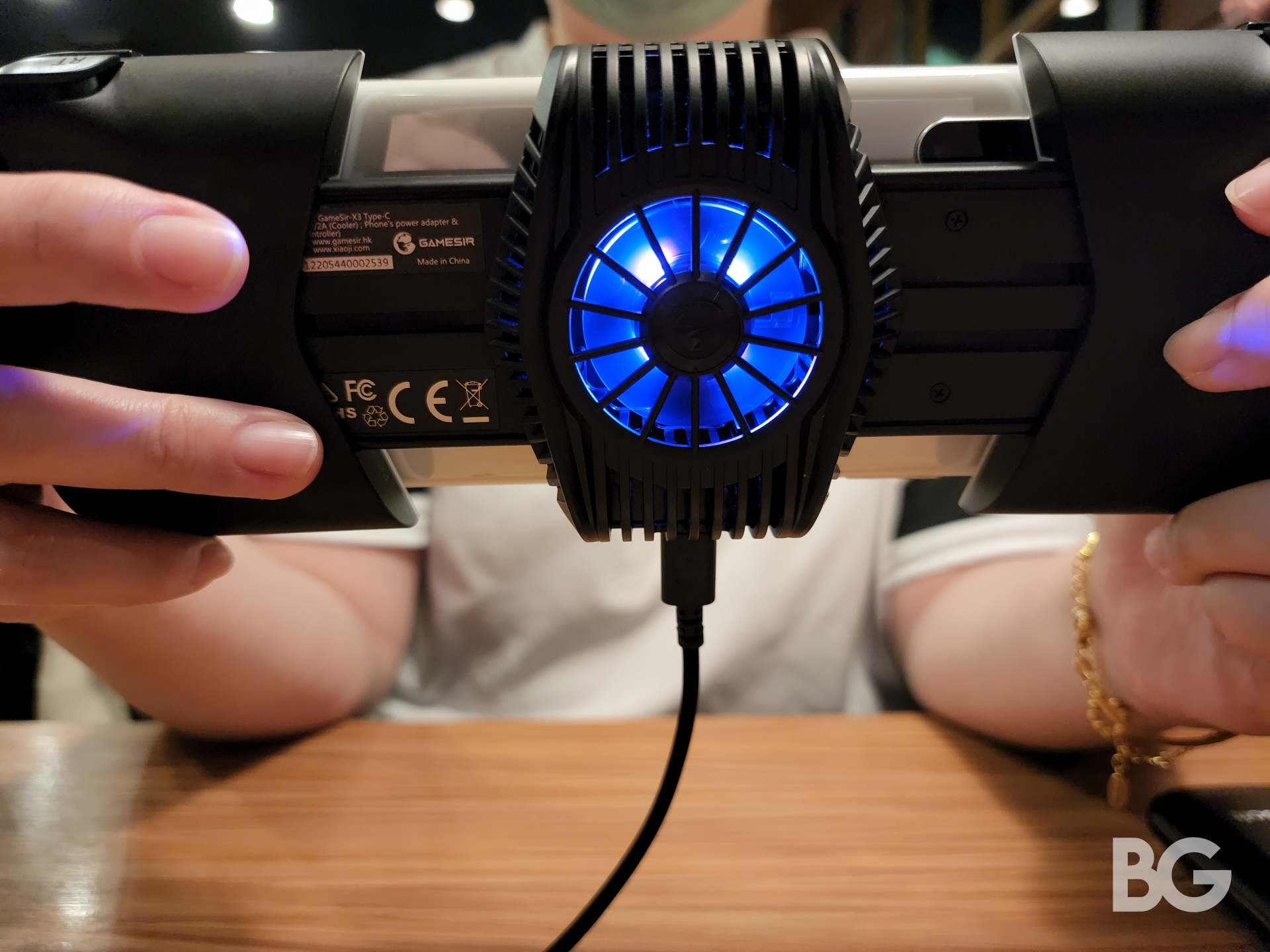
The Price Factor
The benefit and advantages the GameSir X3 offer do not come without a price tag to match. In fact, the controller costs a whopping $99 USD – that’s RM 440+/- for those in Malaysia. And in case you didn’t know, a PlayStation 5 DualSense controller costs less. So when we talk about the price tag alone, the X3 is by no means a gadget within the budget-friendly compound.
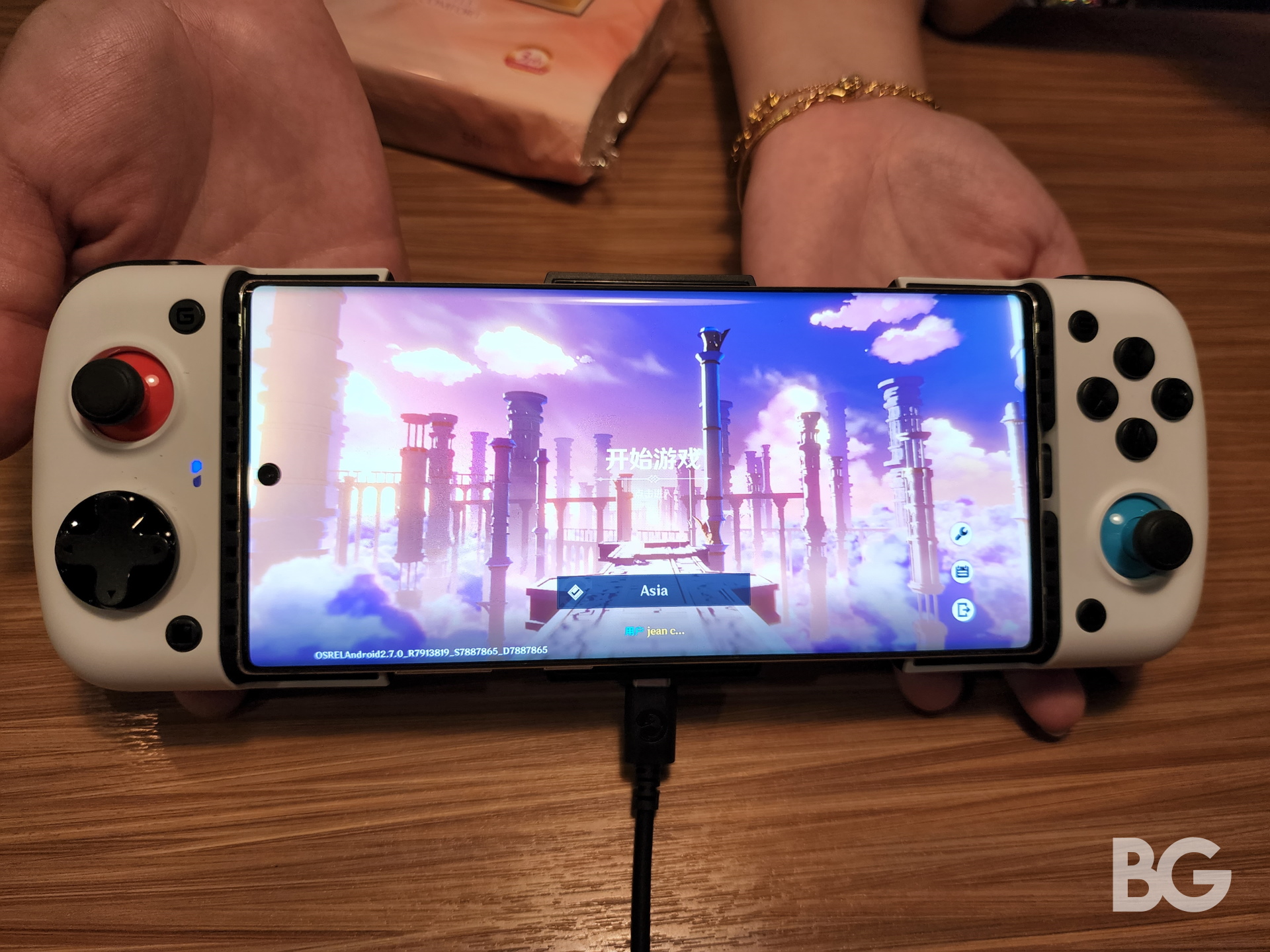
Ultimately, the price value’s worth is subjective to individuals. If you are one who plays a lot of mobile games, especially FPS, MOBA, and Racing types, then go for it. If you are looking for a good controller that will last a long time and allows you to do remote play with your console, go for it. If you are currently using the X2 that is wearing out and is looking for an upgrade, go for it. If you are any other type of player, consult your wallet and if you can and want, go for it.
Interested in getting a GameSir X3 for yourself? Have 8% discount on us with this code when you get it - BunnygX3 - valid till July 2, 2022.
TapTap
This time around, GameSir seems to have partnered up with an app called TapTap in their bid to enrich X3 users’ experience. TapTap is available for both X3 users and non and I can see the appeal of the app for both groups. The app provides a rich library of content featuring the latest game on the Android ecosystem as well as quality walkthroughs, guides, listicles, community discussions, and my favourite part – exclusive beta opportunities. I even found one useful article that pointed me towards the best controller-supported games where I made good use of my X3 on.



The TapTap app also automatically detects games that’s been installed on my phone and allows me to easily manage and monitor their update needs and statuses, including the ability to launch and play my games directly from the app. In a way, it’s sort of like a one-stop-centre for all gaming-related activities on our phones. TapTap is not a mandatory app for the X3 but it does serve as a valuable companion app especially after I realised I could download betas and games that are not available in my local region yet.
Check out TapTap here. With or without an X3, the app could still be great for managing your game library and staying up to date with quality news.
What I Liked About The GameSir X3
- Good build quality
- Zero-latency
- Working cooling system
- Work well with games and remote play
- Magnetic detachable action keys
- Light and ergonomic
What I Wished Was Better
- Separated power source for cooling system limits usage opportunity
- The price tag is a little high
Verdict
As far as the result goes, the GameSir X3 is strong in almost every department. It has a great design that allows for long-hours comfortable use, a low power consumption that doesn’t tax the phone battery, the stability that USB-C offers, and the flexibility provided by its magnetic keycaps. Performance-wise, zero latency and a cooling system that actually work as designed speaks volume on how this gadget would benefit the most competitive players out there. The price is a little steep for a third-party controller, but the value it offers is justified.
Interested in getting a GameSir X3 for yourself? Have 8% discount on us with this code when you get it - BunnygX3 - code valid till July 2, 2022.
